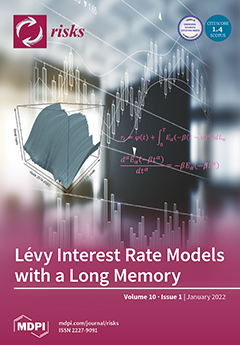Journal article in Risks

Did you know that thanks to the self-selection induced by the possibility of driving behaviour monitoring, the insurance industry can minimise the negative effect information asymmetry has on the motor insurance market. This can be achieved, for example, by observing the choices made by the insured after being offered a new voluntary contract with a premium based on telematics data.
Our analysis was carried out with the use of three selected characteristics that can determine the insured’s risk profile, i.e., distance covered, self-assessment, and insurance premium paid; the significance of the latter—although it may be intuitive—is questionable at commonly accepted significance levels.
Abstract
The purpose of this paper is an analysis of the presence of self-selection mechanisms on the market that could bring the market closer to the separating equilibrium state, in line with the Rothschild–Stiglitz equilibrium model and its subsequent modifications. An example is the Polish market of compulsory third-party liability insurance of vehicle owners. This paper describes this market in terms of both its structure and its financial results.
The main focus is on describing the assumptions of the Rothschild–Stiglitz model for markets operating under the conditions of information asymmetry and based on the self-selection mechanism, allowing for an unequivocal determination of the insured’s profile without the need to actually observe the insured’s behaviour.
Finally, we show that thanks to the self-selection induced by the possibility of driving behaviour monitoring, the industry can minimise the negative effect information asymmetry has on the motor insurance market. This can be achieved, for example, by observing the choices made by the insured after being offered a new voluntary contract with a premium based on telematics data. Our analysis was carried out with the use of three selected characteristics that can determine the insured’s risk profile, i.e., distance covered, self-assessment, and insurance premium paid; the significance of the latter—although it may be intuitive—is questionable at commonly accepted significance levels. Therefore, the main result is that although there is some evidence on the disputed matter, there can be no definitive conclusion—especially in terms of risk as measured by insurance premium.
Keywords:
insurance market equilibrium, Rothschild–Stiglitz model, motor insurance, self-selection mechanism
JEL Classification:
G22, G14, D82
Credits
| Authors | Kuryłowicz, Łukasz; Śliwiński, Adam |
| Date | 2022 |
| Pages | 1-13 |
| Type | Journal article |
| ISSN | 2227-9091 |
| DOI | 10.3390/risks10010009 |
| How to cite | Kuryłowicz, Łukasz, and Adam Śliwiński. 2022. Risk Self-Selection and the Concept of Equilibrium in a Competitive Insurance Market. Risks 10 (1): 9. |
Full text
Full text is available at ResearchGate

